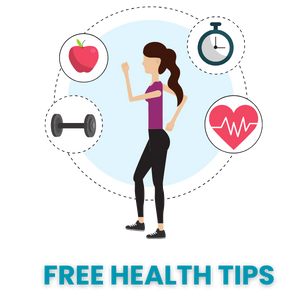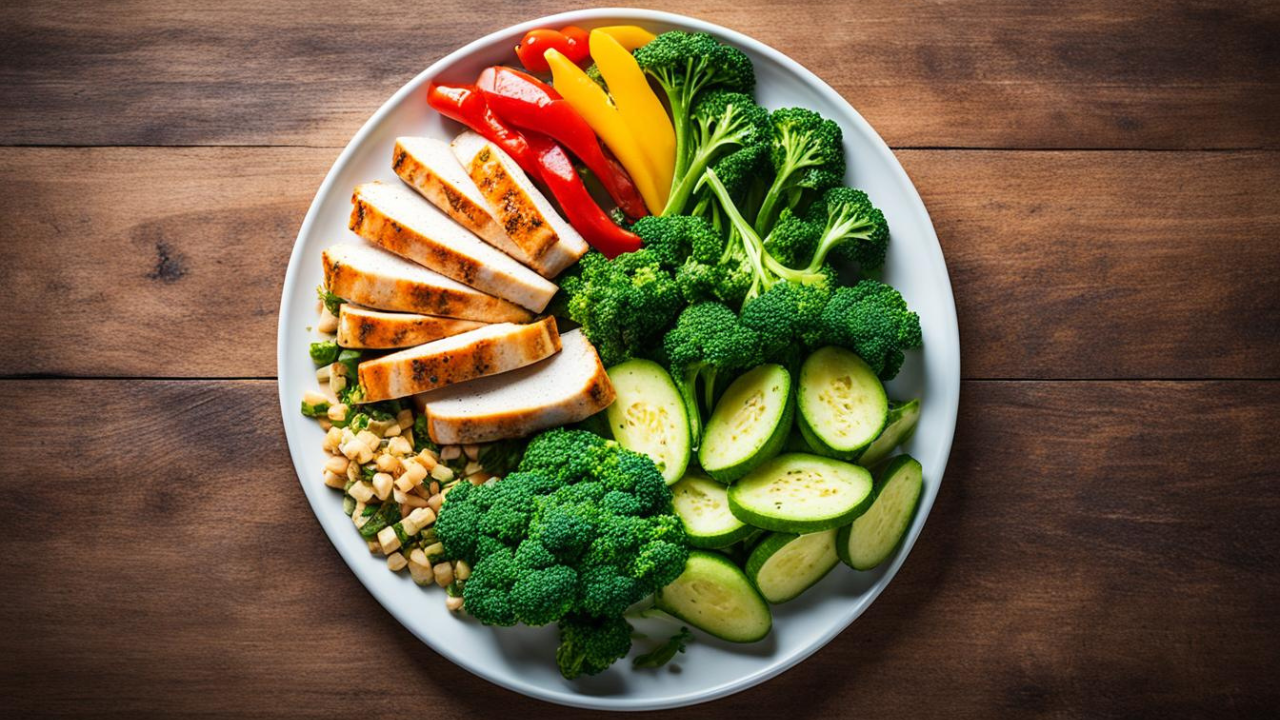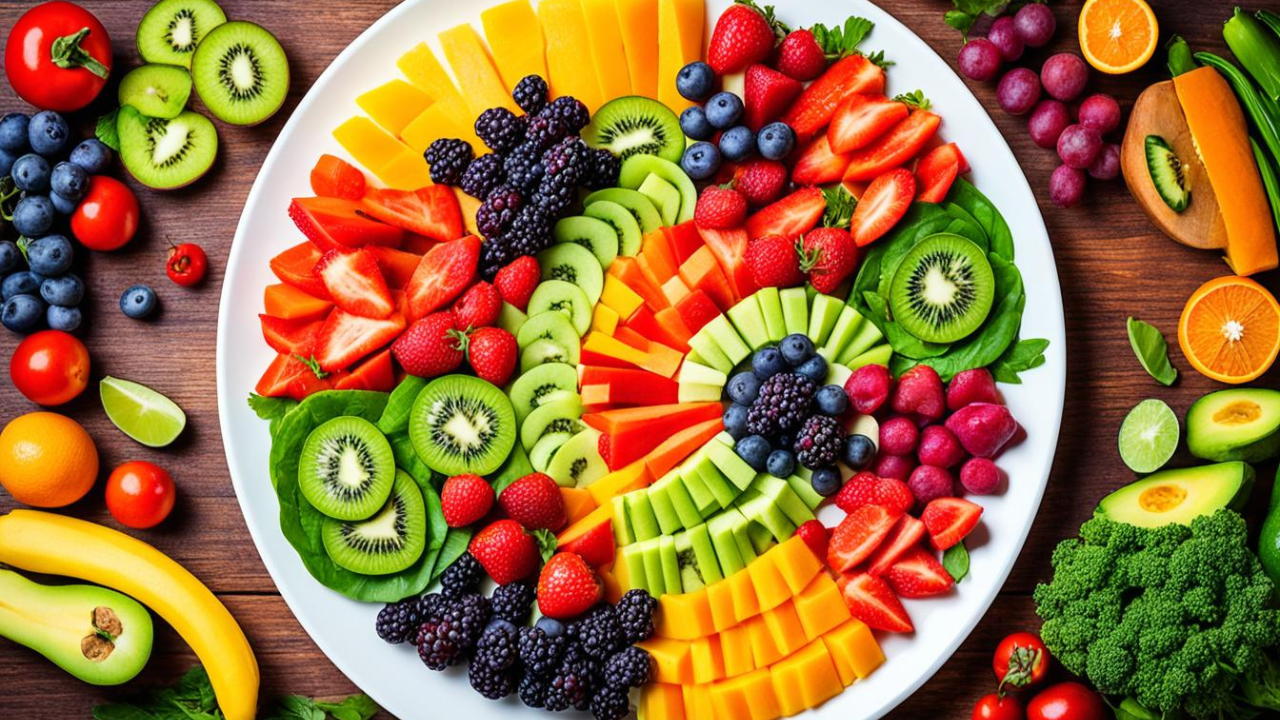Diet Plan – A variety of excellent food sources are incorporated into your meal plan to deal with your weight. Consider eating a rainbow by adding different hues to your plate. Even soft, lush greens, oranges, tomatoes, and even new spices are packed with nutrients, fiber, and minerals. Adding frozen bell peppers, broccoli, or onions to casseroles and tortillas can quickly and favorably increase shading and supplements. This is a smart diet plan.
Top 12 Diet Plans for a Healthy Lifestyle:
For a healthy lifestyle, you need to consume organic products, vegetables, whole grains, skim or low-fat milk, and milk. Incorporate a variety of protein foods such as fish, lean meats and poultry, eggs, vegetables (beans and peas), soy products, nuts, and seeds.
1. Eat Fresh Fruits Every Day:
Try organic products other than apples and bananas, such as cherry, pineapple, and natural kiwi products. Try frozen, canned, or dried varieties when new all-natural products are out of season. Be aware that canned and dried natural products may have added sugar or syrup. The assortment of canned organic products is squeezed out with water or your own juice.
2. Take Fresh Green Vegetables:
Use spices like rosemary to change up your barbecues and steamed vegetables. Similarly, you can use a small amount of dub cooking to fry the vegetables in a skillet without sheets. Or, in the back, try canned or frozen veggies for a simple side dish with just a microwave and features. Look for canned vegetables with no added salt, sprinkles, or cream sauce. For a change, try different vegetables each week.
3. Eat a Type of Food Rich in Calcium:
Consider low-carb, low-fat yogurt that doesn’t add sugar content, even in the absence of low-fat, low-fat milk. These come in a variety of flavors and can be surprising therapeutic alternatives.
4. Eat Fresh Meat:
Take the opportunity that your number one formula needs to burn breaded fish or poultry, make or taste a better variety by baking. Maybe try dried beans instead of meat. You may be surprised to find yet another dish by ordering a side and searching the internet or in magazines for low-calorie programs.
5. Eat Comfort Foods:
Balance is everything in a smart diet. The number one type of food is available, whether it is high in carbohydrates, fats, or sugars. The important thing is to eat them only occasionally and compensate them with more food resources and much more real work.
6. Some General Tips for Comfort Food Sauces:
Eat them often. Generally, if you consume these food resources daily, reduce them to once a week or once a month. Eat a smaller amount. If your only fatty food is a bar of chocolate, it has smaller dimensions or just most of the pub.
Use low-calorie accessories or prepare your food in unexpected ways. For example, if your own cheddar mac and cheese formula consists of whole, scattered cheddar, and whole milk, try switching to skim milk instead of margarine, low-fat cheddar, fresh lettuce, or berries. Remember that we never increase the size of the section.
7. If possible, Eat eggs for Breakfast:
Eggs are an unimaginable noise, especially if you consume them before the start of the day. They are rich in extraordinary protein and some basic dietary supplements, such as choline, that people often do not get enough of. Eating eggs at the beginning of the day creates a feeling of togetherness. After a day and a half, the calories burned seem to decrease during this process. This can be very helpful in losing weight.
8. Sufficient Drinking Water:
Drinking lots of water is important for your health. Many studies have shown that drinking water can increase weight loss, weight bearing, and even the number of calories burned daily.
9. Heat or Broil instead of Broiling or Frying:
The way you eat can radically change your health effects. Grilling, cooking, flashing, and deep broiling are most often the main approaches to becoming cooked fish and meat.
However, through this approach to cooking, some potentially harmful combinations are formed. For example, polycyclic aromatic hydrocarbons (PAHs), enhanced glycation performance (AGE), and heterocyclic amines (HCA) require supplementation of omega 3 and vitamin D.
10. Try a new health prescription a week:
Choosing what to eat for dinner can always lead to ignorance. Therefore, many people generally use similar programs repeatedly. You may have been cooking a similar program on autopilot for years. Whether they are healthy or unwanted strategies, it is always beneficial to stab something new.
Try to consider making another good recipe for any event after each week. This allows you to change the intake of your food and dietary supplements and add a new healthy plan to your routine. You can also take dietary supplements for a healthy lifestyle. Or try to generate a better kind of formula dear.
11. Avoid “Diet” Foods:
A healthy “food source” can be quite misleading. They are generally radically devoid of fatty substances and are often referred to as “fat,” “low-fat,” “fat-loss,” and even “low-calorie.”
In either case, fats give sugar and transparent accessories are often added to compensate for the lack of flavor and surface. Therefore, many people who eat regular types of foods will now contain more sugar and considerably more calories.
12. Drink Black Coffee:
Espresso, perhaps the most famous light meal on the planet, is very healthy. In fact, it is an important source of cancer prophylaxis and is associated with many medical benefits. Various types of espresso, for example, reduced risk of diabetes, reduced mental health, liver disease, etc., contain many additional accessories, such as sugar, syrup, substantial cream, sugar, milk. Many of these drinks are basically processed in cups.
Drinking these assortments quickly disproves all of espresso’s medical benefits, adding unwanted calories and loads of sugar.



















Leave a Reply